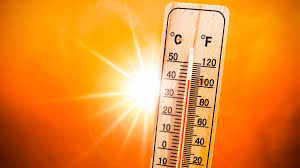It’s official now. The global average temperature has exceeded 1.5 degrees Celsius above the pre-industrial levels for the first time on record. This brings the world closer to breaching the pledge that as many as 195 governments made under the 2015 Paris climate agreement. The planet’s average temperature in 2024 was 1.6 degrees Celsius higher than in the 1850-1900 pre-industrial period, according to the European Union’s Copernicus Climate Change Service (C3S).
The bleak finding comes at a time when devastating wildfires continue to tear through Los Angeles, California, a disaster scientists say was made worse by climate change. The wildfires have so far claimed sixteen human lives while more than 12,000 structures have been destroyed. According to a preliminary estimate, the economic losses of the disaster range from $135 billion to $150 billion. Wildfires are among the many disasters that climate change is making more frequent and severe. Climate change is also creating new unknown diseases that will require hitherto undeveloped medicines to keep people healthy while making big pharma reap inconceivable profits.
Every continental region, with the exception of Australasia and Antarctica, recorded its hottest year ever, as 11 months of 2024 surpassed the 1.5 degrees Celsius mark. Global temperatures have reached unprecedented highs and continue to rise for several consecutive years. The previous record for the hottest year was set in 2023. Notably, all ten of the warmest years on record have occurred within the last ten years. However, this marks the first instance of an entire calendar year exceeding the 1.5 degrees Celsius threshold.
The year was marked by extreme weather events all through. Devastating floods in April killed hundreds of people in Pakistan and Afghanistan, while a year-long drought left water levels in the Amazon at an all-time low. Climate change also intensifies storms and heavy rainfall, as a warmer atmosphere can retain more moisture, resulting in severe downpours. In 2024, atmospheric water vapour hit an all-time high with the US National Oceanic and Atmospheric Administration reporting that it was the third-wettest year on record. Likewise, atmospheric concentrations of carbon dioxide, the primary greenhouse gas, hit a new record of 422 parts per million in 2024, according to the C3C.
While human-induced warming, such as burning fossil fuels, is to be blamed for the state of affairs, natural factors, such as a significant El Niño event, also played a crucial role in the rising temperatures of 2024. El Niño is a phenomenon that influences weather patterns around the world, leading to higher ocean temperatures in the tropical Pacific region.
Year-to-year fluctuations in the weather mean that even if a single year surpasses 1.5 degrees Celsius, the long-term average may still lie below that. It is this long-term average temperature that the Paris agreement referred to. The current long-term average is around 1.3 degrees Celsius. To ensure that warming does not exceed 1.5 degrees Celsius for a prolonged period, and avoid the worst effects of climate change, we need to rapidly reduce greenhouse gas emissions and adopt more greener alternatives to fossil fuels.
However, the prospects for this appear grim, at least in the near future, as US President-elect Donald Trump who is set to assume office on 20 January, has already declared climate change a hoax, disregarding the global scientific consensus. During his first term, he withdrew the United States from the Paris agreement and has pledged to increase fossil fuel production while reversing President Joe Biden’s efforts to promote alternative energy sources. The US happens to be one of the largest contributors of greenhouse gases and therefore plays a vital role in helping in the global battle against climate change.

